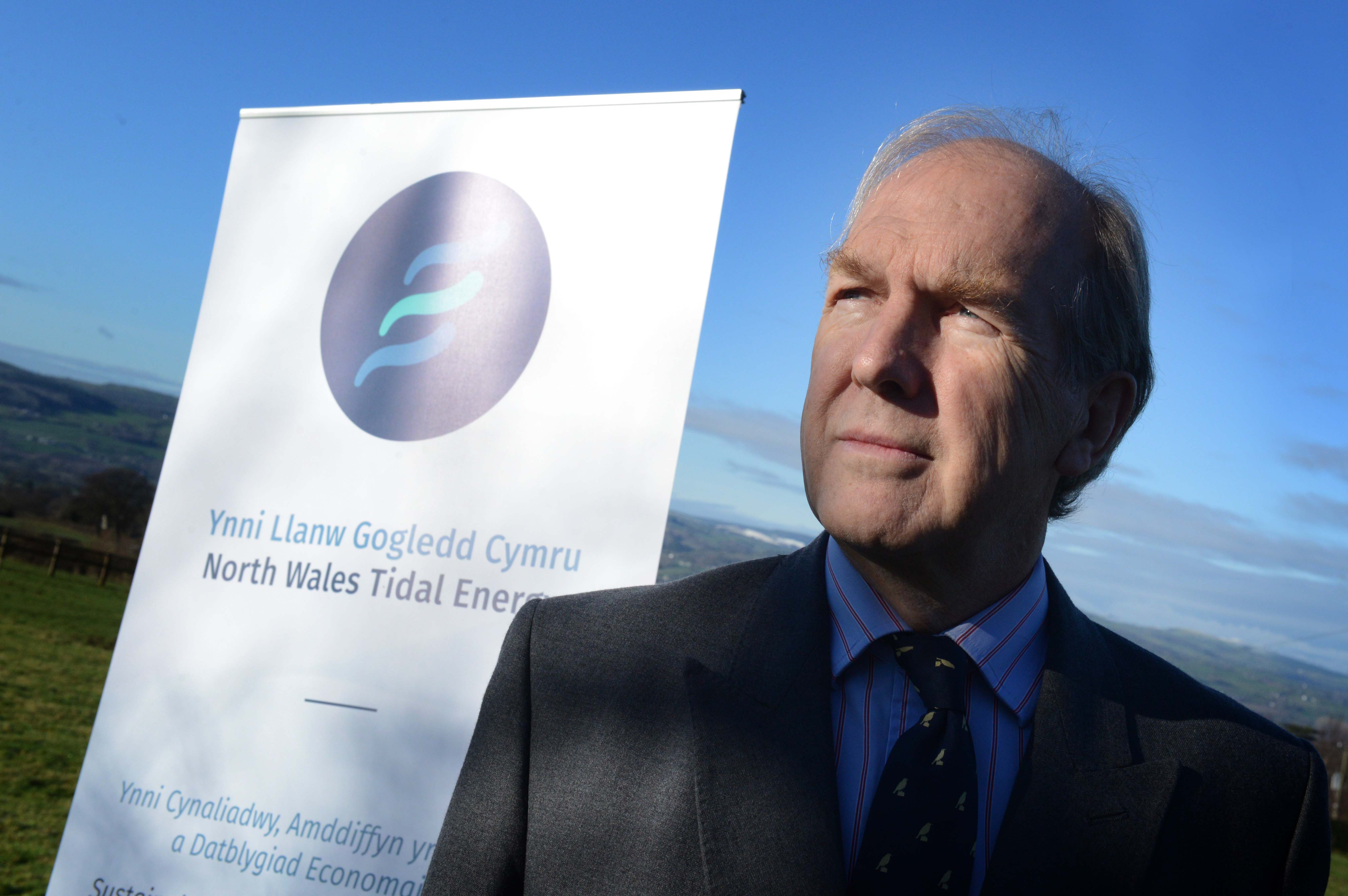A Government review into the role of tidal lagoons has delivered a major boost for a £7 billion energy scheme along the coast of North Wales.
The independent review by former Westminster energy minister Charles Hendry will potentially unlock plans by North Wales Tidal Energy & Coast Protection Company (NWTE) to harness electricity from the rise and fall of the tide.
St Asaph-based NWTE is one of six UK schemes highlighted in Mr Hendry’s review into whether technology can affordably provide green energy to the UK.
The others are in Swansea, Cardiff, Newport, the Cumbrian coast and Bridgwater Bay in Somerset. Together they could provide about a tenth of the UK’s electricity needs and help meet carbon targets.
NWTE’s proposals would generate over 2GW of natural, renewable energy for a century and in the process create thousands of jobs in construction and tourism, dramatically transforming the region’s economic prosperity.
The company aims to work with local communities and business people to create a “world-leading tidal energy programme” and flood protection for places like Colwyn Bay, Rhyl and St Asaph.
The sheltered tidal lagoon would power turbines and also provide amenities such as marinas, jetties, moorings, sailing, fishing and aquaculture areas, so underpinning North Wales’ successful tourism economy.
Chairman Henry Dixon said: “We welcome Mr Hendry’s Report. The comprehensive and excellent work by his team underlines the compelling argument for tidal lagoons and provides a major boost towards making our proposals a reality.
We are delighted that the Report recognises NWTE as one of the country’s most advanced tidal lagoon developers and that its conclusions endorse our proposals to build a tidal lagoon that not only provides low-carbon energy, but coastal protection and economic regeneration too.”
The Report focused on design, financing, costs and business models, with Mr Hendry revealing last month that he also visited communities that will benefit from the tidal lagoons. While Mr Hendry’s Report specifically highlights NWTE’s focus on coastal protection, he goes on to conclude that tidal lagoons, such as that proposed by NWTE, would make a strong contribution to UK energy security, as an indigenous and completely predictable form of supply, contribute positively to progress towards the UK’s decarbonisation goals, play a competitive role as part of the UK’s energy mix alongside low carbon energy from nuclear and offshore wind and offer a significant economic opportunity for Wales and the UK more generally.
Mr Dixon adds: “We strongly support Mr Hendry’s recommendation for the rapid development of the Swansea ‘pathfinder lagoon’. This will get the industry off to a flying start and provide invaluable learning opportunities as well as stimulating and supporting the supply chain that will be needed in future years. We encourage the Government to move quickly to adopt Mr Hendry’s recommendations”.
NWTE’s tidal lagoon proposals will provide much-needed coastal protection for vital strategic assets and communities where people currently live with the constant fear of devastating floods, explained Mr Dixon
He added: “As a country, we are blessed with some of the best locations in the world for capturing and harnessing tidal surge energy.
“The Hendry review recognises the potential of such projects to provide secure, clean and affordable energy for families and businesses across the country.
“However, tidal impoundments and lagoons have so much more to offer. Communities that live close to the coast will benefit from enhanced coastal protection.
“In addition, the construction of schemes of the size being proposed offer significant economic development for the whole region – both during and after the construction phase. The recently published Initial Economic Impact Report of our proposals by Glyndwr University indicates a full economic impact of over £11Bn with over 20,000 jobs created.
“We are working with environmental scientists and geo-physicists to look at all aspects of the sea, the seabed, the coastline and the wildlife to be able to make an informed decision about where to site our impoundment and where not to develop plans.
“It will take at least five years to carry out all the environmental and engineering studies needed to get the right scheme in the right place. The construction phase will then take another six years to complete – but North Wales will then have an asset that will benefit the region for more than 100 years.
“Within the proposed tidal lagoon there will be game-changing opportunities for the development of safe and attractive activity tourism. Yachting, windsurfing, canoeing and swimming will all benefit. So too, will the providers of services to residents and tourists – cafe and hotel owners, restaurants and many others.”
Following a successful presentation at the House of Commons in November 2015, NWTE has been working with its partners to develop its proposals and source funding for future activity. The strong support for tidal lagoons from Mr Hendry’s Report is likely to have a significant impact on the company’s development.










